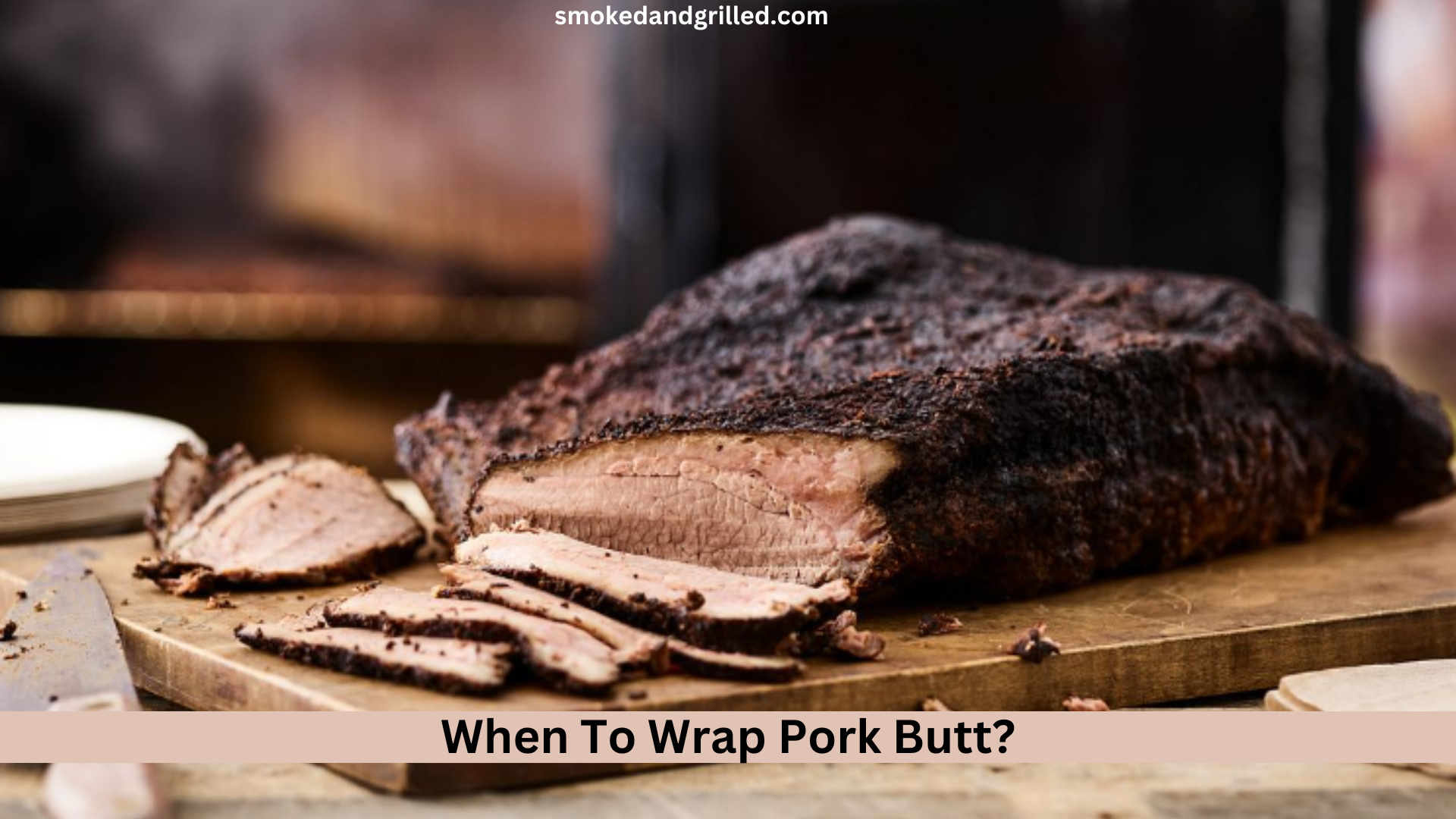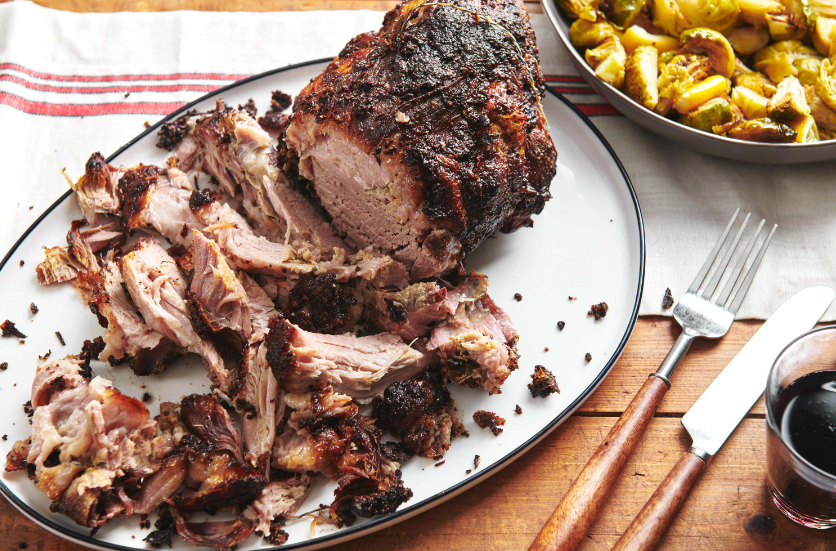Regarding barbequing, there is no cut of meat as varied and delicious as a pork butt. Whether making pulled pork sandwiches or preparing a full-on smoked dinner, learning the ropes of working with this particular cut can be intimidating.
In this blog post, we’ll explore different methods for wrapping your pork, including using aluminum foil, butcher paper (also called kraft paper), towel insulation, and tips to help ensure that your roast is soaked in juicy goodness.
Read on for complete instructions on when to wrap pork butt so you are always perfectly prepared!
Should I Wrap My Pork Butt?
The pork butt is best wrapped in foil during the cooking process once it has reached an internal temperature of 165 degrees Fahrenheit.
This provides insulation for the meat and promotes even cooking, ensuring the pork is juicy and tender when ready to serve it.
Wrapping pork butt in the oven or smoker also helps contain any drippings, which can be saved and added to your dish.
For best results, start checking the internal temperature of your pork after about six hours of cooking.
If it’s not there yet, keep cooking until you reach 165° F and then wrap it up tight in heavy-duty aluminum foil or butcher paper, allowing air vents to create a sealed package, so your pork cooks evenly.
Also Read: How To Reheat Pulled Pork?
What Temp To Wrap Pork Butt?
Wrapping a pork butt in foil can provide excellent results in the final product. To do this properly, the smoker’s temperature should be around 185-195 degrees Fahrenheit, depending on how tender you would like it to be.
Any higher and the meat may cook too fast and become tough; any lower and it won’t cook adequately.
The foil will provide insulation to allow an even cook throughout until the desired internal temp is reached. Wrapping your pork butt in foil could result in incredible tenderness that will impress your guests!
How To Check The Internal Temperature For Pork Butt?
When smoking pork butt, there are a few key things to consider before taking it off of the heat.
The most crucial factor is to ensure the internal temperature has reached at least 160 to 170 degrees Fahrenheit, as this provides that any potentially harmful bacteria have been killed.
If not, keep cooking or smoke further – the internal temperature will continue to rise naturally even after the meat has been removed from heat.
Be sure to rest your meat after smoking, allowing it to sit for 3-5 minutes before cutting or slicing it open, as this will enable juices to distribute and helps make your cut of pork more tender and juicy.
Why Do You Wrap Pork Butt? Reasons
1. To Keep The Pork Butt Moist
One of the primary reasons for wrapping pork butt is to keep it moist. Pork butt is a relatively tough cut of meat, and as such, it can dry out quickly if not properly cooked.
By wrapping the meat in butcher paper or aluminum foil, you can aid in preventing moisture loss, ensuring that the finished product is juicy and delicious.
2. To Prevent The Formation Of A Crust
Another reason for wrapping pork butt is to prevent the formation of a crust. When meat is cooked, the surface of the heart will often form a crusty layer as the juices evaporate.
This crust can be dry and unappetizing. Wrapping the meat will help to prevent this from happening, resulting in a juicier, more flavorful final product.
3. To Speed Up The Cooking Process
This can be especially helpful when cooking significant cuts of meat that would otherwise take hours to cook through.
4. To Add Flavor
Wrapping pork butt can also help to add flavor to the meat. When you wrap the meat in foil or butcher paper, you create a mini-oven that traps all the juices and flavors the meat releases and cooks.
This results in a more flavorful final product That will make anyone’s taste buds happy, no matter how picky they are.
5. To Keep Things Tidy
Finally, wrapping pork butt can help to keep things tidy while cooking. When you wrap the meat in foil or butcher paper, any juices or fat released during cooking will be contained within the wrapper.
This helps to prevent splatters and messes, making cleanup much more accessible.
6. To Protect The Skin From Overcooking
The skin on pork butt can also benefit from being wrapped in foil or butcher paper. The skin will eventually become dry and rigid when subjected to direct heat over an extended period.
Wrapping the pork butt will help to protect the skin from overcooking, which results in a more flavorful and tender final product.
How To Prepare It For A Smoker?
1. Choose The Right Cut Of Pork.
The butt is the best cut to use when it comes to smoking pork. This is because the butt is a well-marbled piece of meat that will be tender and juicy once it has been smoked.
2. Trim The Fat.
Once you have chosen your cut of pork, you will need to trim away any excess fat. This can be done with a sharp knife or kitchen shears.
3. Season The Pork.
After trimming the fat, it is time to season the pork. This may be accomplished using several various spices or with a rub that is purchased from a store.
4. Prepare The Smoker.
While the pork is seasoned, you can prepare your smoker for cooking. This involves lighting the coals and adding wood chips for smoke flavor.
5. Place The Pork In The Smoker.
Once the smoker is prepared, you can place the pork inside. The pork must be positioned in the smoker’s fat-side up so it will self-baste as it cooks.
6. Wrap The Pork Butt In Foil.
After smoking the pork butt for the recommended time, wrap it in foil and Keep doing what you’re doing with the cooking until the internal temperature reaches between 160 and 170 degrees Fahrenheit.
7. Smoke The Pork Until It Is Cooked Through.
The period required to smoke pork will vary depending on the size of the butt and the temperature of your smoker. However, you should expect it to take anywhere from 6 to 8 hours for the pork to be fully cooked through.
8. Remove The Pork From The Smoker And Allow It To Rest.
Once the pork has finished cooking, release it from the smoker and sit for at least 30 minutes before carving or serving.
Does Wrapping Your Pork Butt Ruin The Bark?
When it comes to smoking pork butts, the bark is an essential part of the delicious meal.
Does wrapping your pork butt ruin the bark or help make a better overall product? The answer can vary depending on who you ask.
Wrapping can cause a loss of smoke penetration, leading to an increase in moisture around the meat.
It can also produce a softer texture to the bark, yet releasing many flavors. Whether or not you wrap your pork butt is a matter of personal preference and experimentation.
Each method has advantages and disadvantages, so it’s important to try both for yourself and see what works best for you and your desired outcome.
FAQs
What Temp Is Pork Butt Done?
To ensure proper safety and the signature tenderness of pork butt, you generally want to cook it to an internal temperature of around 165 to 170 degrees Fahrenheit.
To measure the temperature accurately, you will need a meat thermometer. This simple method ensures your pork butt is cooked fully for optimal flavor and texture and is safe for consumption.
What Temp To Pull Pork Butt?
Pulling pork butt requires precise calculations to achieve that smoky, meaty goodness. The measurement of “doneness” for this delicious barbecue dish is a minimum temperature of 165°F.
It’s essential to be precise with the temperature when pulling pork butt because, if it isn’t cooked through, you may end up with dry, stringy meat with an unpleasant texture and flavor.
For accurate results, use a smoker or digital thermometer to check the internal temperature at intervals throughout the cooking process.
Should I Wrap Pork Butt In Foil Or Butcher Paper?
Deciding between wrapping your pork butt in foil or butcher paper can be challenging.
The foil allows the meat to steam, which helps keep the moisture inside and leads to a tender and juicy end product.
Butcher paper prevents this kind of steaming but will still hold all the juices inside while also allowing the outside of the meat to create a bark with more flavor complexity.
Butcher paper is preferable for leaner cuts as it keeps them moist during the lengthy cooking process.
Ultimately, deciding which option best fits your style and your particular cut of meat would be best.
Conclusion
Pork butt is a tough cut of meat that benefits from a long, slow cook time. If you’re unsure when to wrap pork butt, follow these simple guidelines.
For pulled pork, wrap the pork butt in foil after 6-8 hours of cooking between 160 to 170 degrees Fahrenheit.
Use butcher’s paper or Aluminium foil to secure the wrapped pork butt before returning it to the cooker. With these guidelines in mind, you’ll be able to produce perfectly cooked pork butt every time.
Also Read: How Long To Smoke A Pork Butt At 250?



